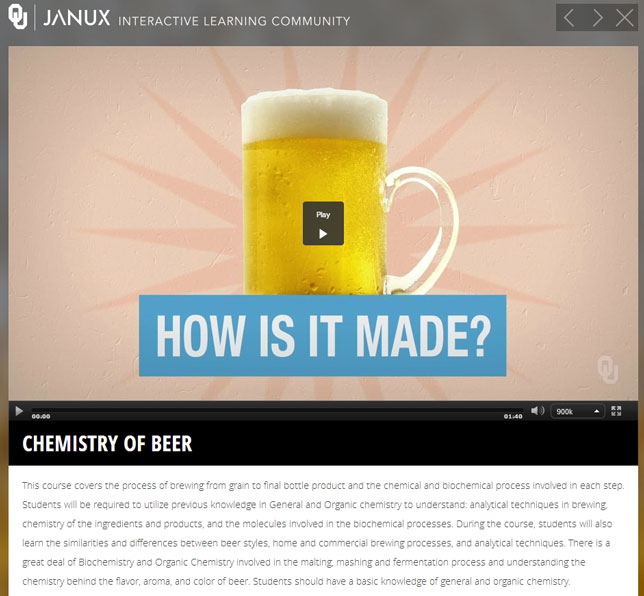U Oklahoma's Janux Flips the MOOC
The University of Oklahoma's Janux learning platform makes the university's online courses available to students all over the world for free.
- By Dian Schaffhauser
- 11/17/14
When University of Oklahoma (OU) students take an online course at their home institution, they could be joined by thousands of learners from all over the world, participating for no credit or cost. In a twist on the MOOC, OU's Janux learning platform makes the university's online courses (credit-bearing for OU students) available to anyone, anywhere.
Founded on the belief that students learn best when interacting with other learners, Janux online aims to provide broad access to higher education. "The cost of tuition continues to rise, making education less accessible to many students," said Senior Vice Provost Kyle Harper. "OU wants to offer the highest-quality solution possible to students who do not have the time or the money to get the education they want and deserve. Janux has taken resources and expertise at OU and made it available to students anywhere. Already, we have seen engagement from all over the world and witnessed students tapping into course material to achieve personal and professional goals."
Courses have covered computer science, history, political science, chemistry, education and earth and energy; however, not all of them are necessarily run-of-the-mill college offerings. The most popular Janux class has turned out to be Chemistry of Beer, taught by a professor in the Department of Chemistry and Biochemistry.

Chemistry of Beer on Janux
Many of the attendees of that beer course are "entrepreneurs who are beginning or already involved in starting their own breweries around the world," said Harper. "This course in particular has been interesting because it teaches a notoriously difficult subject, organic chemistry. The course has gone viral with nearly 9,000 students globally."
OU students earn one credit for the beer course; the number of credits given for other courses varies. For example, the same faculty member, Mark Morvant, is also teaching a General Chemistry class, which is worth five credit hours.
The classes last for 16 weeks — the same length as the standard semester — and some have a set schedule, where the instructor and students interact in real time.
Supporting a Public Mission
Janux runs on a platform by NextThought, located about half a mile from the university in Norman, OK. NextThought already had an early version of the learning platform when it teamed up with OU to create Janux. The company continues to own the platform and develop Janux's functionality, but it works closely with the university on scope and opportunities.
OU's Central IT department hosts all content and student data on its own servers. Content curation is principally mediated through the university's Center for Teaching Excellence. Faculty members decide what will be offered on the platform, following selection criteria that include learning impact, innovation, faculty, technology compatibility and brand value.

Janux on the iPad
For mobile use, the Janux platform has been released in iPad app form. The app allows students to access the courses, read course materials, watch lectures and videos and complete practice questions. Upcoming features for the app include the ability to add notes, participate in discussion forums and submit assignments.
In its first six months of operation, Janux had nearly 20,000 total users from 90 countries, the university reported. So far the platform has hosted about 20 courses open to both the university's own students for credit as well as the public for no credit.
Oklahoma U said that Janux supports the public mission of the university by providing free, educational, open content. On top of that, added Harper, "This is also an important opportunity to showcase the [university] around the world as a leader in technology, learning, academic excellence and community."
Commitment to Open Educational Resources
A cost-saving aspect of the program is the use of open educational resources. In some cases that includes free textbooks from OpenStax College. One Janux class, Introduction to Sociology, has been redesigned around the use of an OpenStax sociology textbook, a move that's saving each OU student about $165 compared to a previous textbook the class has used.
"Spending hundreds of dollars on textbooks is one less thing students have to worry about," said Kelly Damphousse, interim dean and professor of that class. He added that he finds it rewarding to see students interact so heavily with the course. "I believe that is due to technology making the platform interactive, different and, more importantly, accessible."
About the Author
Dian Schaffhauser is a former senior contributing editor for 1105 Media's education publications THE Journal, Campus Technology and Spaces4Learning.